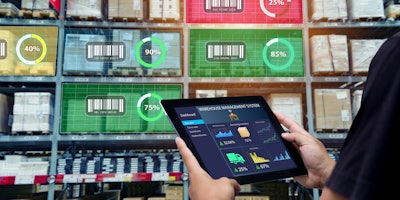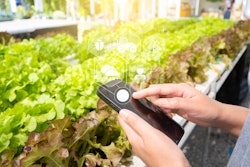
For many companies, warehouse automation is not new.
But for some companies, warehouse automation still remains a foreign way of doing business; one that supersedes the way “they’ve been operating for years.”
It involves wearables, drones, robotics and emerging technologies that are costly to implement, difficult to learn and somewhat cumbersome to existing staff.
And more often than not, automation is only being implemented into certain parts of the supply chain vs. end-to-end.
In Food Logistics’ March/April 2023 issue, editor-in-chief Marina Mayer talks with several industry experts about how warehouse automation keeps cold food chains moving.
Here’s an interview with Greg Meyne, senior director, automation at enVista, details the importance of considering lead times when implementing warehouse automation. [CLICK HERE to read the article in full].
Food Logistics: More and more companies in the cold food chain are adopting warehouse automation solutions. Why?
Greg Meyne: Warehouse automation solutions are incredibly valuable in climate controlled facilities. These systems can minimize space, creating a smaller footprint and allowing warehouse leaders to save on utility spend. Automation also helps alleviate labor constraints within climate controlled environments, which is a big deal with the current labor market and warehouse employee turnover.
Food Logistics: On the flip side, there are several companies just getting started in the automated warehousing game. What advice do you have for those organizations just starting to adapt these solutions? What are the next steps?
Meyne: My advice would be to explore the options available in the automation market. Also, explore the current utilization of climate controlled space in your general area. A lot of companies have excess space available and will act as a 3PL for other companies to use that space. That could benefit your company money without requiring a costly build.
The next step would be to connect with a consulting or engineering group that is familiar with the benefits of automation in your environment to size the area correctly. This step can be a big cost saver. Then, connect with an architect to adequately build the area to maintain the required temperature and properly insulate the area, including the floor.
Food Logistics: Describe new technologies/solutions introduced to market over the past 12 months. Include press releases when/where applicable.
Meyne: A lot of robotic systems for storage and picking have been working their way into the climate-controlled environments and are a constant in ambient environments. These technologies can minimize space requirements, maximize associate picking rates and provide additional ways for warehouses to minimize labor constraints.
Food Logistics: What are the Top 5 types of automated warehousing solutions (i.e., WES, order fulfillment), and why?
Meyne:
1) Warehouse execution system (WES) – A WES is needed for inventory control and for any robotic automation solution. The ability of the WES to batch like orders, minimizing trips to pick locations, is key to increased productivity.
2) Order fulfillment/picking technologies – These are low-end, software-driven automation solutions that can increase associate productivity by 10-30% over traditional paper/RF picking.
3) Unit load automated storage/retrieval systems (AS/RS) – AS/RS is vertical automation technology. It uses machines to store and retrieve pallet loads vertically, at a height of up to 100’-0”, or in some cases higher. When trying to optimize use of your space, these are incredibly valuable.
4) Robotic solutions – These include floor-mounted robots that swarm or follow pickers, captured robots that work in a fixed space vertically, goods-to-person systems where robots bring goods to the associate doing the picking and more. These systems improve efficiency on the floor.
5) Convey and sort – These are automation systems that transport and sort to different destinations. These system make decisions that associates would typically need to make, removing some of the burden from the associate and increasing efficiency.
Food Logistics: How does warehouse automation help those B2B companies looking to branch out to B2C/e-commerce?
Meyne: Most warehouse automation is designed to handle multiple order types -- retail, B2B, B2C, etc. Omnichannel fulfillment spans multiple industry segments, including food logistics, to cover order size from pallet to parcel end user delivery. Automation design for each application is unique and much depends on how much capital a client is willing to spend with solutions ranging from high to low automation.
Food Logistics: How will disruptions such as inflation and labor shortage, for example, impact the future of warehouse automation?
Meyne: Our clients in almost all industries are experiencing some type of labor disruption, whether it is from a shortage, lack of necessary skills (fork truck drivers for example), or increased labor rate. The need to reduce labor and increase productivity through an automated solution is higher now than at anytime in my 25-plus years in the industry. While inflation may slow down our customers’ rate of spending, this does not appear to have slowed down the need for automation solutions to resolve our clients’ fulfillment issues.
Food Logistics: What are some things not addressed above that may be pertinent to our readers?
Meyne: Lead times for automation solutions are a major factor to consider. Almost all of our automation solutions have extended lead times due to supply chain and volume issues. Technology suppliers are bursting with orders; this, along with supply chain disruptions, is extending lead times. Some solutions can take as long as 24 months to implement, which is almost double the usual lead time from pre-COVID.
[CLICK HERE to read the article in full].



















